I always found it really difficult to understand what the hell was going on in news reports around the Middle East. It all seemed like the same thing to me. Everyone was fighting each other about the same stuff. Obviously I was obliviously wrong, as I have found out through my new obsession with history and politics, so here is my brief overview for your benefit as well. I don’t expect that this account is all encompassing and because my knowledge is still limited there may be bits and pieces that I’ll need to revise as I learn more. Thanks to my awesome friend Glynn who studied Politics at Melbourne Uni and is now doing his Masters in International Relations at Monash for loaning me a book (US Foreign Policy in the Middle East – The Roots of anti-Americanism by Kylie Baxter and Shahram Akbarzadeh) which I have also used as a reference point for the below information.
I always find it useful to have a map handy when I try and visualize these moments in history. I recommend this one for historical maps of Israel.
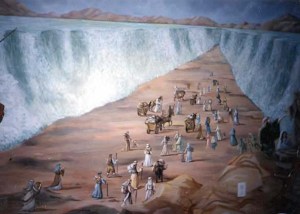 ONE
ONE
Somewhere between 1400BC and 1200BC, Israelites were being persecuted by the Egyptians. According to the old testament of the Christian bible (Exodus 6:2-8) and the Torah, God speaks to Moses and promises Israel to the descendants of his people. Through history, the Jewish understanding of God has been a very personal one – as scripture says “I will take you as my own people, and I will be your God”. This creates a psychological connection between the Jewish people, their religion and their promised land through time.
TWO
The diaspora (scattering) of Jewish people from their original home (within the area of Israel) throughout Europe and Russia from 1400 onwards happened for a variety of reasons that are often debated. Some suggest it is the result of multiple persecutions and expulsions, others, that migration (including violent expulsions) were (and are) a normal part of human history. Whatever the truth, the Jews were one of many Diasporas that occurred over a similar time frame including the Armenians and the Chinese. It is also important to note that Jews maintained a presence in Israel throughout their history (although diminishing until the mid 1800’s).
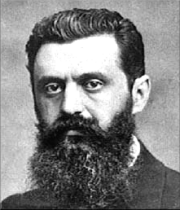 THREE
THREE
In 1896, Viennese Theodor Herzl (founder of political Zionism – the movement and belief in the return of Jews to the land promised to them by God via Moses) published “the Jewish State” which in turn influenced Russian-Polish Doctor Leo Pinsker who (in response to anti-Semitic violence at the time in Russia) became a strong Jewish Nationalist and wrote “Auto-Emancipation” arguing that a Jewish Homeland was the only solution for the Jewish people. it should be noted that in the ensuing growth of the Zionist movement, not Zionists were religious, for some it was about the biblical connection and promise, for it was about the original Jewish home.
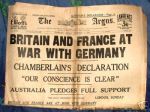 FOUR
FOUR
In the lead up to WW1, the German Empire was already experiencing unrest between the German (and broader European society) and Jews. When Kaiser Wilhelm decided to take Germany on a new path, it led to the country’s diplomatic support for Austria-Hungary after the country declared war on Serbia and ultimately initiated WW1.
While a general fear or concern of Jews related to differences in beliefs between religions, political influence and economic power existed many years prior to WW1, a broader belief that the German Jews lacked of patriotism was heightened after WW1 and led to mainstream anti-semitism (despite the fact that according to many reports, more Jews fought in the German army than any other political or religious group). WW1 ended for a number of different reasons, the main ones being Germany’s lack of access to military supplies due to a blockade, significant military causalities with worse threatened due to the allied forces (British Empire, France, Russia, US…etc) and the threat of new weapons and tactics from those forces.
The Turkish created Ottoman Empire who had long ruled the Middle East at the time, signed its own death certificate by supporting Germany in this war – they had carried out genocide against the Armenians.
The League of Nations (founded with 42 member countries) was subsequently set up on the back of the Versailles treaty to promote peace between countries and to prevent a similar outbreak of war from occurring again.
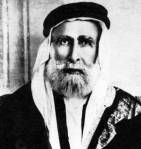 FIVE
FIVE
At the same time In the lead up to WW1 in the Middle East, the powerful Hashemite family (Sharif Husayn of Mecca – in modern Saudi Arabia, whose family were considered direct descendants of Mohammad) has been in contact with United Kingdom’s High Commissioner based in Egypt. Husayn was looking for British support for their forces to lead a revolt against Ottoman rule in al-Ḥiǧāz and secure land for their own rule. (see the translated letters here). The promise from Britain was support for the action – and ultimately Arab self-determination, but it was never defined how much land would be apportioned to this new potential Arab state. On the premise of British support, the Hashemite family instigated the Arab Revolt in 1916, but did not receive the military supply support needed to sustain and grow as the leaders had expected.
 SIX
SIX
Back in the Europe, Britain and the US, with strong networks, the Zionist movement and power increased until, in 1917, (despite the previous, although ambiguous British support for Arab rule in the Middle East), Zionist Patron Lord Rothschild was granted a declaration via Arthur James Balfour from the Queen of England stating that:
“her Majesty’s Government view with favour the establishment in Palestine of a national home for the Jewish people, and will use their best endeavors to facilitate the achievement of this object, it being clearly understood that nothing shall be done which may prejudice the civil and religious of the existing non-Jewish communities in Palestine”.
FIVE
As a result of the loss in WW1, between 1918 and 1922, the Sykes-Picot Agreement of Feb 1916 provided the League of Nations with the power to grant France mandates over Syria and Lebanon , United Kingdom mandates over Mesopotamia and Palestine (later divided into Palestine and Transjordan). Parts of the Ottoman Empire on the Arabian Peninsula became parts of what are today Saudi Arabia and Yemen.
In 1919, the US government authored the King-Crane Commission which evidenced a requirement of significant military force to implement the Balfour agreement with the Zionist Jewish community, and as a result, indicated a strong sense of injustice in the Zionist program that would also go against the understanding of the agreement that “nothing shall be done which may prejudice the civil and religious of the existing non-Jewish communities in Palestine”.
So England made good on SOME of the agreement with the Hashemite family…but it certainly wasn’t what the Hashemite family had been expecting or hoping for, and in the case of Palestine, it had provided a completely different and altogether more binding commitment to the Jewish Zionist community for their settlement in Palestine.
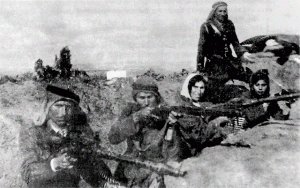 SIX
SIX
At the time of the Balfour agreement, there were 56k Jews vs. 700k Palestinians living in the area in and around Israel, these Jews had been living in the area throughout the time of the Ottoman Empire. In fact reports suggest throughout some of the history of the empire Christians, Muslims and Jews lived side by side in relative peace.
Immigrant Jews, escaping the atrocities of WW1 and the ingrained European xenophobia that had been bubbling for hundreds of years, saw this as the ideal solution. During the 3rd and 4th Aliyah (1919-1929) 122k Jews migrated to Palestine.
However as their numbers swelled, tension between the Jewish and Palestinian communities began to rise significantly. If we think about this in the context of the refugee or immigration in Australia, we have a cap of 20,000 on refugees and 190,000 for immigration. In contrast we have 297,000 births a year and an existing citizenship of 22.68 million. That’s 0.93% of our total population and those immigrating are across a variety of countries and religions. So the swelling of tens of thousands of Jews into a total Palestinian population of 700k shows just how and why there was such significant tension that grew so quickly where immigration laws and quotas had not be set or enforced by the British government on behalf of the democratic mix of original inhabitants (which included both Jews and Palestinians).
In 1922, a British Whitepaper released by the Churchill government acknowledged the situation as untenable in writing “The status of all citizens of Palestine in the eyes of the law shall be Palestinian, and it has never been intended that they, or any section of them, should possess any other judicial status”.
Despite this, due to rising tensions post WW1, a further 250,000 Jews migrated to Palestine during the 5th Aliyah (1929-1939) and the Nazi’s negotiated an agreement to transfer another 50,000 Jews during their rise to power. Between 1933 and 1948, Britain placed quotas on Jewish immigration to Palestine. This led Jews who were attempting to escape the growing antisemitism in Europe, to choose illegal immigration (which came to be known as Aliyah Bet).
Under British Mandate, the Palestinians had no truly powerful political representative other than the British government itself. And so this situation ultimately instigated the Arab Revolt in 1936-39, a period of intense violence led by the Arab Higher Committee targeting both Jewish and British interests (that had started as a civil protest against the British governments sale of Palestinian land to the Zionist movement but rapidly deteriorated).
At the end of this revolt in 1939, the British government stated again that “His Majesty’s Government therefore now declare that it is not part of their policy that Palestine should become a Jewish state. [It is] contrary to their obligations to the Arabs under the Mandate.”
Shortly after this time, the Jewish population in Palestine had reached 450,000.
SEVEN
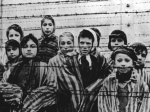 Then came WW2 which began in 1939 because Germany had not, and did not want to fulfil its obligations under the Versillias treaty (accepting blame for starting WW1, paying 6.6m in damages, disarming their military, the removal of land and forbidding of union with Austria).
Then came WW2 which began in 1939 because Germany had not, and did not want to fulfil its obligations under the Versillias treaty (accepting blame for starting WW1, paying 6.6m in damages, disarming their military, the removal of land and forbidding of union with Austria).
In the middle of the war, in 1942, the outcomes of an international Zionism conference resulted in the Biltmore Program which called for an immediate reimplementation of the original purpose of the Balfour declaration which the British government had denounced in 1939.
By 1945, it was estimated the Holocaust had been responsible for claiming the lives of 6 million Jews and the European Jewish communities had been largely decimated. In the aftermath of these horrors, the local Jewish community in Palestine turned against the British Mandate and illegal immigration continued as the Jewish community looked for a way to aid their Jewish family and comrades in their time of need.
However, some factions of the Zionist community had also gained significant military experience throughout the war. Groups including the Irgun, Lehi and Haganah began to set up military forces to proactively defend Jewish communities in Israel against Palestinian attack (although these groups had varying amounts of support for their approach from Jewish immigrants). Regardless of the thoughts of the rest of the Jewish community at that time, 2 years after the official end of WW1, in 1947, Palestine was in a state of chaos due to cyclical violence between the military groups defending the two communities.
The UK had obviously had a enough of attempting to fix the issue that it had created in Palestine and so referred it on to the United Nations (which had been set up to replace the disbanded League of Nations).
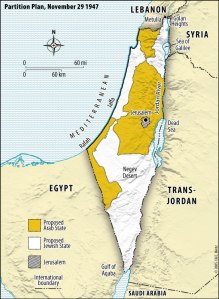 EIGHT
EIGHT
The UN passed Resolution 181 in November 1947 to partition Palestine into two states in which over the preceding 20 years, had grown its Jewish population from 56k to 500k due to immigration, nearly outnumbering the Palestinians. Post-war superpowers Russia and America endorsed the new state and gave it international legitimacy (despite the initial concern of the US in its King-Crane commission report 28 years prior). How quickly a nation forgets.
In short, the Jews accepted the partition and the Palestinians (who were represented by the Arab Higher Commission), rejected it completely and threatened force. The day after Israel’s declaration of independence, an Arab force entered the new state started the first major Arab-Israeli war.
Palestinian citizens fled in what is known as the Palestinian Exodus or an-Nakbah (“disaster” in Arabic). There is significant contention between Jewish and Arab historians as to what happened. Israeli historians tend to focus on information that suggests Arab leaders told the Palestinian people to leave and return after the war was over. Other historians suggest a wide range of factors including Jewish military advances, attacks against Arab villages and fears of massacre after Deir Yassin which caused many to leave out of panic; expulsion orders by Zionist authorities; the voluntary self-removal of the wealthier classes, the collapse in Palestinian leadership, and an unwillingness to live under Jewish control. Later, a series of laws passed by the first Israeli government prevented Arab Palestinians from returning to their homes, or claiming their property. Whatever the truth of history – Palestinian Arabs were frightened, coerced or trusted their leaders words and left. This exodus over over 700k people in 1948 caused further problems as it left those remaining in a state of chaos without the power of people and political institutions to properly deal with their situation.
Some might ask – if both sides perpetrated violence, why would the Arabs have been the ones to leave? Why did the Jewish community remain steadfast? I wonder (no evidence here, just a thought) if it had to do with the fact that the Jews had just escaped from a situation that was far worse all across Europe. Their capacity to cope with the violent situation and stand their ground for a new sense of true home they felt they hadn’t enjoyed in many years provided them with stronger determination than the Palestinians who underestimated this significant psychological background.
By 1949, Israel had laid claim to victory. In that same year, 700k+ Palestinians were refugees. Similarly over the following 30 years between 1948 and the 1970’s there was a mass exodus of 800,000 to 1,000,000 Jews from Arab and Muslim countries respectively. Some as a result of fear, others due to forced expulsion. And again, perhaps in response to the Jewish laws, Arab countries enacted similar laws disallowing Jews from return or collection of owned property. It seems the “eye for an eye” response mechanism was in full force. In fact, even today, many Arabic countries will refuse entry to any tourist who has a Hebrew stamp on their passport. Perhaps he key difference between the two exodus (Palestinian vs. Jewish) is that Jews had a recognised nation state happy to take them in as citizens, and so 600,000 of those who left Arab and Muslim countries migrated to the new Jewish nation of Israel.
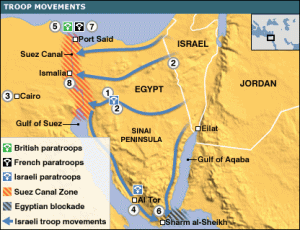 NINE
NINE
In 1956, war broke out again – this time between Egypt and Israel. Gamal Abdul Nasser had asked for a loan from the US government for the construction of the Aswan Dam and was initial accepted and then rejected after the US learned of his overtures to the Soviet Union. In response, Nasser nationalized the Suez Canal which deprived Israel of its waterway access and UK and France of their profits. Of course this simply aggravated the colonial powers who then led a joint military operation to take the canal back. In response to widespread protests, the US condemned this action and called for sanctions against Israel. Operation Musketeer (UK, France and Israel) were eventually forced to withdraw as a result, however, Nasser’s decision to turn to the Soviet Union in the 1950’s further distanced US support from the country.
TEN
In the lead up to 1967, as hostilities between Israel and its neighbours continued, Egypt moved to protect resources and land in Mt Sinai to protect Syria. Israel found itself surrounded. But on 11 June 1967 – 6 days after the war started it was over (in what is now known as the 6 Day War). Israel had used misinformation, military knowledge and tactics to its advantage and had illegally expanded into the West Bank, Sinai and Golan Heights – subsequently Israel became responsible for the more than 1 million Palestinians who lived in those regions. It had increased its size 6 times.
 ELEVEN
ELEVEN
By 1973, Israel’s military strategy was one of active deterrence. As the Soviet Union continued to provide military support to Egypt and Syria on behalf of the Palestinians, America was undecided. In the end, Israel were able to plan and stop an attack from Arab forces. Another military victory that is now known as the Yom Kippur War.
However post this second defeat, by way of protest, Saudi Arabia led a new oil embargo on Western countries and Israel. While politically, if the opposite were true, the West would have done the same – it of course reacted badly to the embargo and this brought Israel and the US closer together than ever before.
By 1981, the US had signed their first strategic cooperation agreement with Israel against Soviet influence. And so it was that since the time of the Ottoman empire, the Arabs had backed the wrong horse (given the eventual outcome of the Cold War and ultimate demise of the Soviet Union).
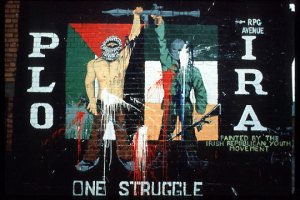 TWELVE
TWELVE
In 1982, Israel invaded original French mandate Lebanon who housed the growing PLO (Palestinian Liberation Organisation) and incurred the condemnation of the international community. Eventually 11,000 PLO fighters were physically relocated to Tunisia in a US-sponsored deal. The Israeli army did not withdraw from Lebanon until May 2000.
 THIRTEEN
THIRTEEN
There have been 1060 UN resolutions concerning the Israeli-Palestinian conflict. The Oslo Accords in 1995 dealt with significant issues around resource use, including roads and water. The biggest issue is really now the resettlement of 1.4 million of Palestinian refugees, a third of which live in UNHCR registered refugee camps. 50k of the original refugees remain.
The refusal of Jordan and other surrounding countries to grant citizenship to Palestinian refugees makes the conflict a cyclical one – for Israel’s power and force will now never cede its territory, despite how legitimate or illegitimate its original creation may have been.
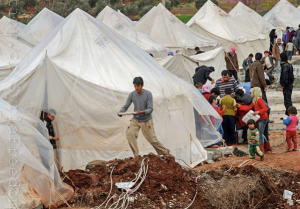 In response to a weakening trend in Palestinian violence and growing economic and security cooperation between Israel and the Palestinian Authority, the Israeli military has removed over 120 check points in 2010 and plans on disengaging from major Palestinian population areas.
In response to a weakening trend in Palestinian violence and growing economic and security cooperation between Israel and the Palestinian Authority, the Israeli military has removed over 120 check points in 2010 and plans on disengaging from major Palestinian population areas.
Neither Israeli or Palestinian civilians support the violence – although latest polls (Aug 2013) shows support for a resumption of Peace talks with Israel is down 9% to 67%. Although this is still an overwhelming majority, its understandable that support would waver up and down over time – I think its hard for any people to keep a positive outlook in the face of so many peace talks that do not end in practical peace that directly improves daily existence.
Palestinians born after 1920 would not even recall their old state as it existed before their birth. These people would now be 93. i.e. there are likely less than a few hundred people who would remember a time before Jewish immigration from Europe and America.
Like Australian Aboriginals driven out of their land, dispossessed and disenfranchised, we know the many years it takes for those societies to heal.
200 years later there is still no true mental peace for Indigenous Australians (although history would show those atrocities were more like the genocide experienced by the Jews than those experienced by the Palestinians). The Jewish people themselves have not yet healed from the atrocities of the holocaust. They know the horrors of freedoms taken all too well.
Regardless, it will take another 100 years or more for the Palestinian people to find their peace from the psychological trauma of the last 100 years.
In the mean time, the world moves on to other conflicts that take the fancy of the media – Syria most recently. Sometimes I feel like our world is a lonely place full of lonely hearts looking for answers that are just, and will always be, out of reach.
Related articles
- Revisiting the Failings of the Jewish Left (jewsdownunder.wordpress.com)
- New York Times to Israel: Drop dead (blogs.timesofisrael.com)
- | ‘Jews a Race’ Genetic Theory comes under fierce attack by DNA Expert! (truthaholics.wordpress.com)
- Schama on talking of Jewish history: ‘Stop being so nervous’ (amanpour.blogs.cnn.com)
- Jewish settlers storm Aqsa Mosque again (worldbulletin.net)
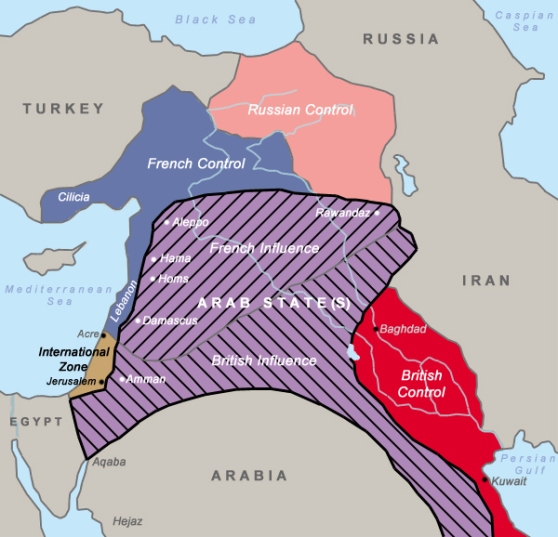
Excellent blog by the way. Thanks for visiting mine http://jewsdownunder.wordpress.com/
This is a very good account in the main as to what happened with the Jews and our expulsion from our own lands.
You say “Various groups of Jewish people migrated to Europe between 1450 and 1914”
We didn’t migrate in the sense of the word. We were imprisoned, persecuted, pillaged, plundered and raped so we fled basically. Though not every one of us. For 3,000 years there has been a Jewish presence in the Land of Israel, whose name was changed by the Romans to Filistin, after a sea faring nation of people, to rid the land of its ‘Jewishness’. They hoped
“Tens of thousands of Jews” didn’t pour into Palestine at the time of the Balfour declaration. That didn’t until the end of WW2, when there were thousands of displace Jews in Europe.
My paternal grandparents fled the Ukraine to escape Tsarist pogroms and sought refuge in England in 1898. Early in 1920, with 10 children departed for their dream, Palestine. There were no “Tens of thousands of Jews” pouring in. There were not too many Arabs, but those there were hostile. Not necessarily to the newcomers but amongst themselves, being a waring and aggressive people.
When the Jews started to make the desert bloom, Arabs arrived in droves from surrounding countries, as their surnames show.
Jews were promised the entire area of Palestine, the British then reneging and giving some 80% of it for the Hashemite Kingdom of Jordan. This is the area that is the country of Palestine, not Israel.
Article 80 of the UN charter laid down the Jewish legal right to settle anywhere in Judea and Samaria, western Palestine, a 10,000 square mile area between the Jordan River and the Mediterranean Sea, an entitlement unaltered in international law and valid to this day and it is enshrined and protected by international law.
This is entirely incorrect ” Palestinian citizens fled in the wake of the violence (perpetrated by both sides) as Jewish military was better prepared to defend its borders than a border-less, stateless, leaderless Palestine. “
Firstly they were not called ‘Palestinians’ until 1967 when the term was put into regular use, having been invented by the Soviet dis-information masters in Moscow in 1965, when they drafted the PLO Constitution. The Arabs didn’t flee. They were asked to leave by their leaders (there is plenty of written Arab information on this) with the promise of a swift return once the ‘Zionist entity had been demolished. https://www.youtube.com/watch?v=FuGqpFxogRg
There was no Jewish military and the Jews were very ill prepared, but the gave it their all. They were fighting for their homeland and would not give up.
The descendants of the people who fled are not refugees. You cannot be a refugee from a country, if you were not born there. Most of those who left in 1948 would not be alive today.
If it weren’t for the powerful Arab lobby at the UN these Arabs would be in the same class of ‘refugees’ as all other refugees in the world.
By the way, at the same time the non-existent people you call Palestinians were fleeing Israel, some 900.000 to a million Jews were being forcibly evicted from Arab/Muslim lands. They have ‘no right of return’ in fact the reverse, these countries have all stated they will not have a Jews in their country. They have no right to compensation. They left homes, money and businesses and were forced to sign over everything to the government. https://www.youtube.com/watch?v=KH8RL2XRr48
There is a very informative web site devoted to this issue http://www.jimena.org/
LikeLike
Hey Shirlee! Thanks for reading my blog and for the kind words – really appreciate it 🙂
I’ve taken the time to research each of your comments and have updated parts of the blog accordingly where appropriate, thanks so much for contribution and ensuring I tell the story as factually as possible.
1. Changed migration to more appropriate “diaspora” and provided reference to the differing views on this and also contexualising within history.
2. Noted Jewish presence in area of Israel through history
3. Noted all the migration figures. There was 40k in the time I mentioned which does amount to tens of thousands but as you rightly point out, there were much larger numbers that happened later so I have provided factual info on this
4. I have clarified the Jewish military groups I was referring to and separated military action out from civilian action and thought.
5. Forcible eviction from Muslim lands – has been added with evidence, numbers and context.
6. I’ll continue to refer to them as refugees as that is, for all intents and purposes, what 1.4 million Palestinians are right now as 1.4 m are registered as such and a third of those live in UNHCR recognised refugee camps (40% of whom are children) – regardless of who is responsible for the creation of that status. I had already noted the fact that many of the original refugees are no longer alive, but inter-generational pain and loss is still very real as I think any Jew could attest to also with the shared experience of the Holocaust.
7. I’m still going to use the word Palestinians because while that is true, its very difficult for us to actually talk about history without calling them something!
8. Lastly, do you have a wikipedia reference for the following comment:
Jews were promised the entire area of Palestine, the British then reneging and giving some 80% of it for the Hashemite Kingdom of Jordan. This is the area that is the country of Palestine, not Israel.
– Was this before the British Mandate of Palestine or after? I can’t find reference to it on a neutral source online.
Michelle 🙂
LikeLike
Reblogged this on The Tale Of Bitter Truth and commented:
A History of the IsraHell and Palestinian
LikeLike